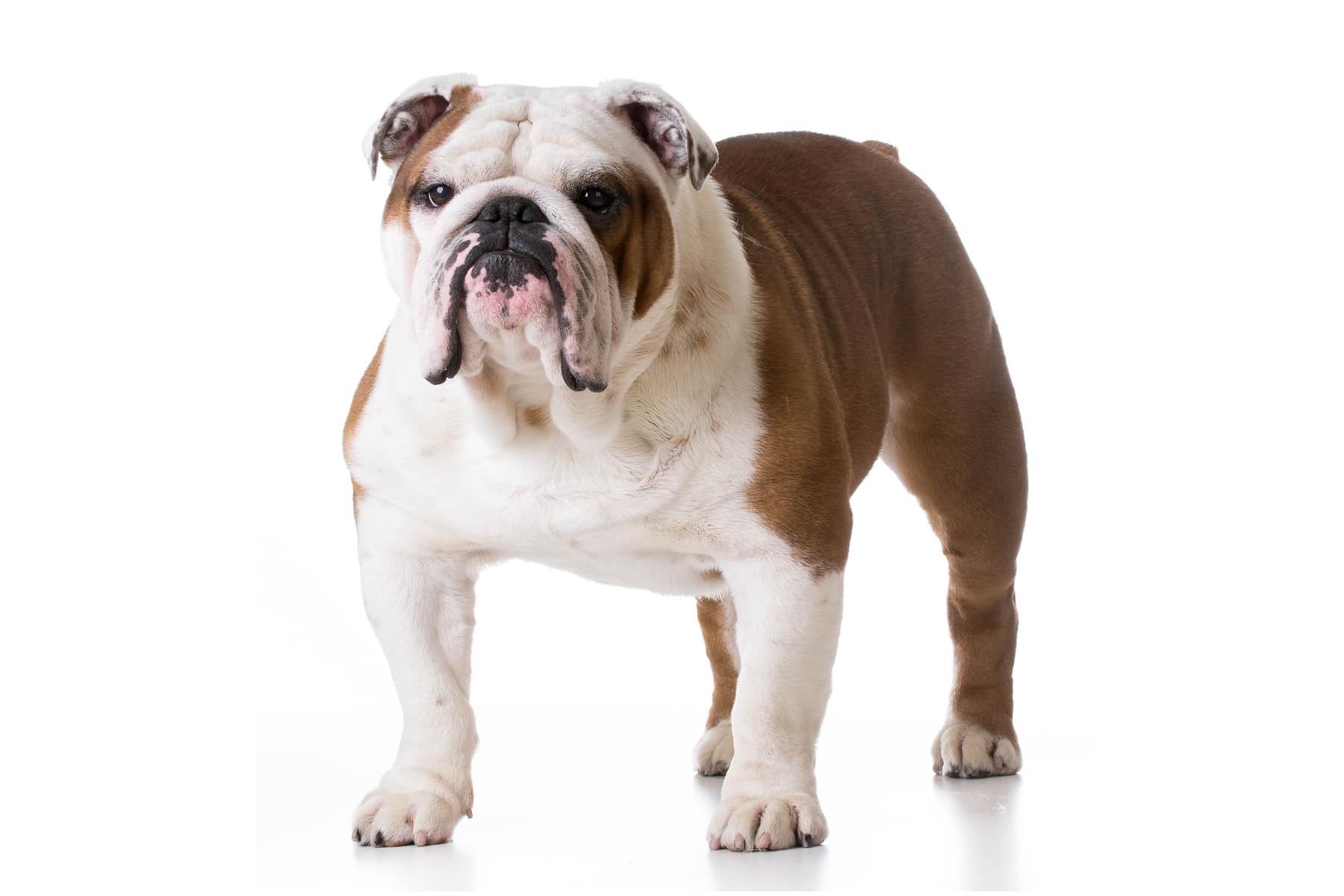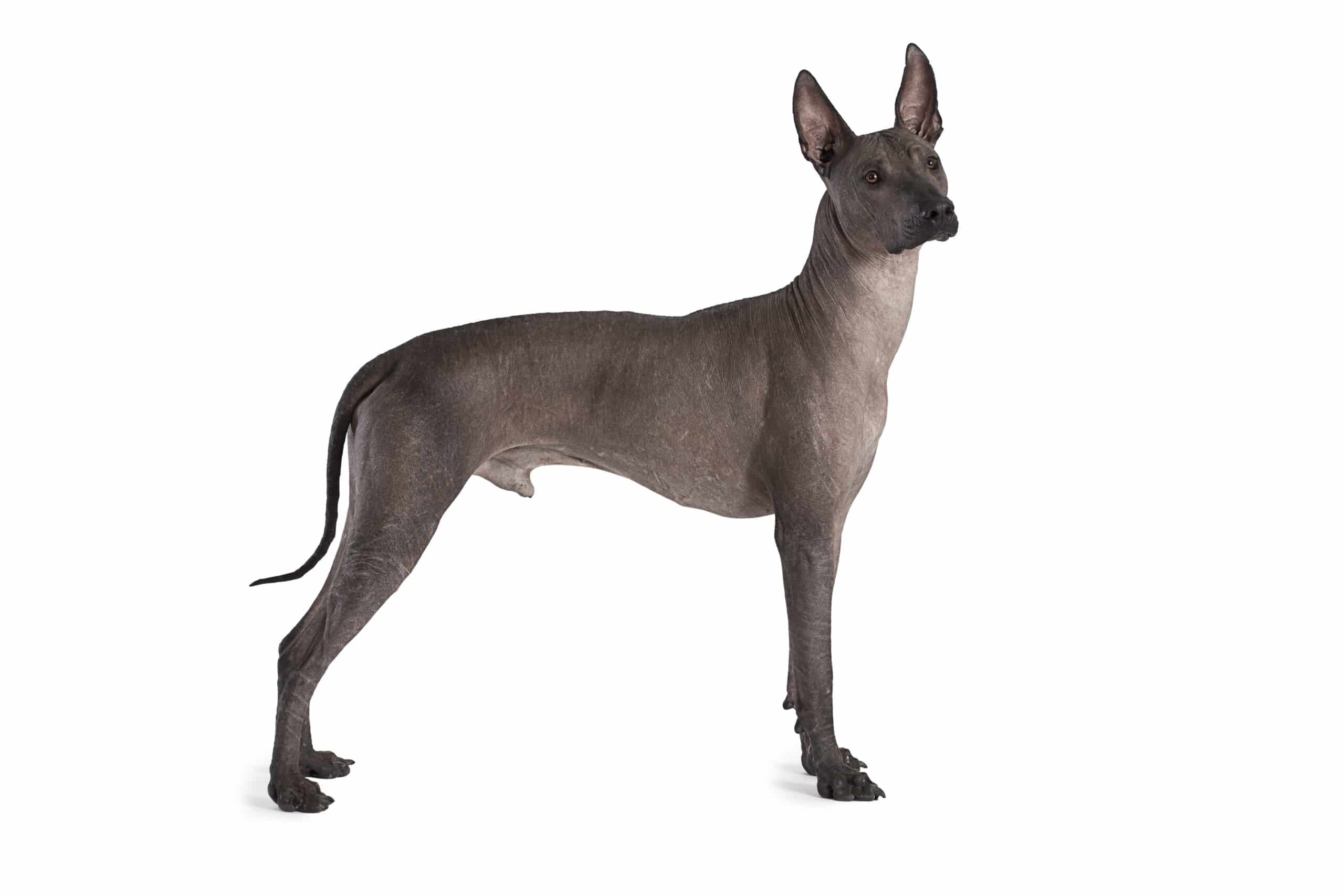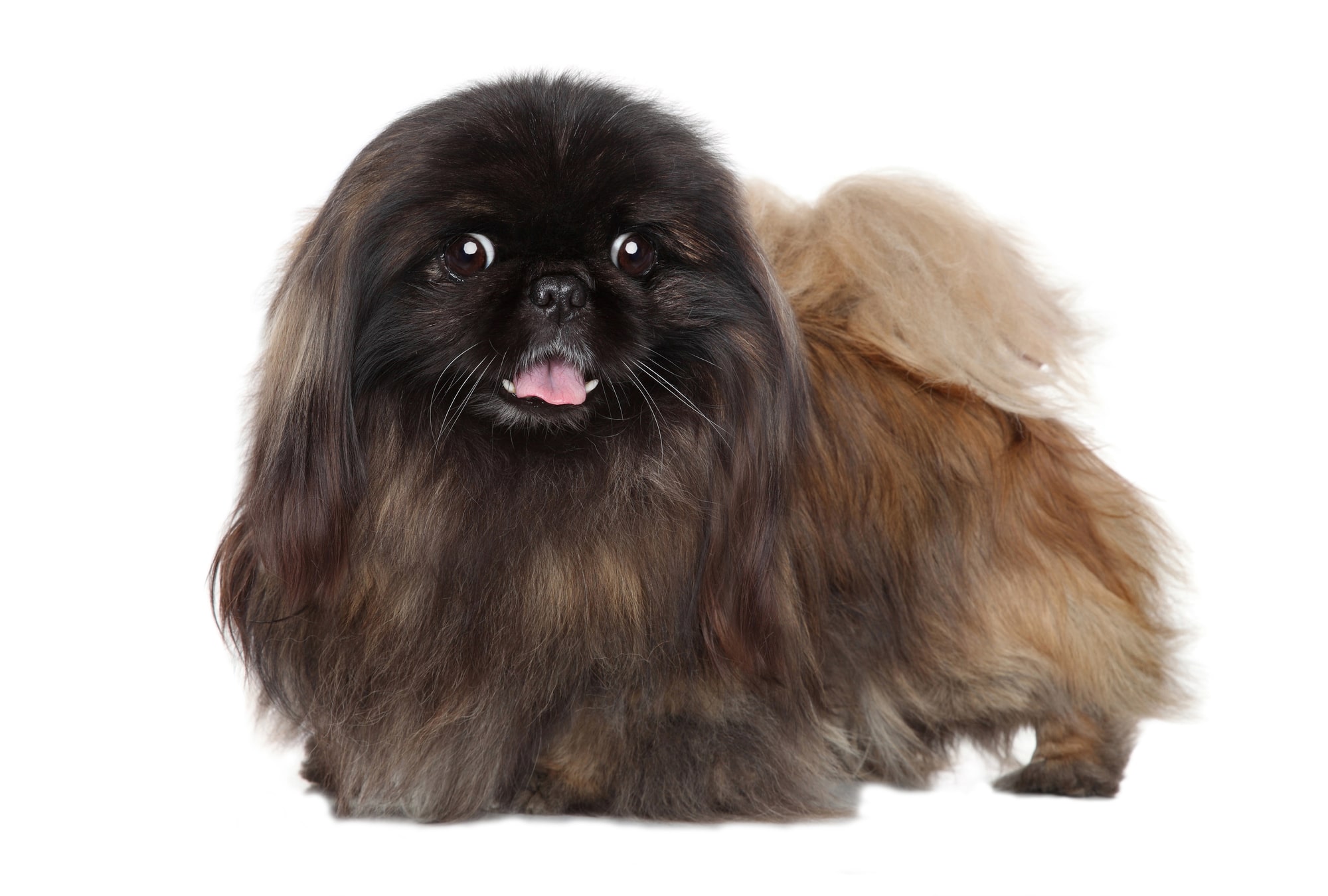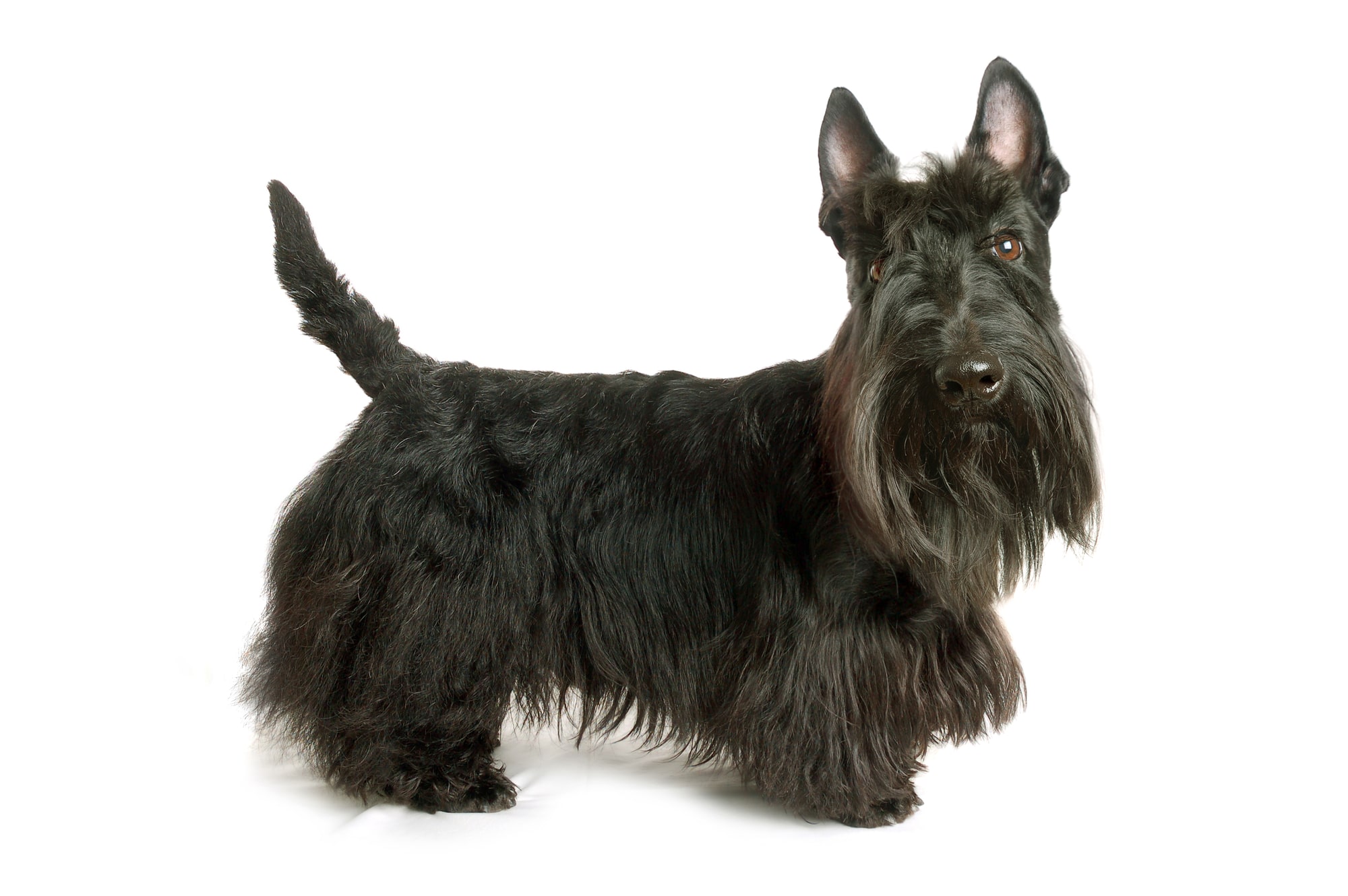Miniature Schnauzer
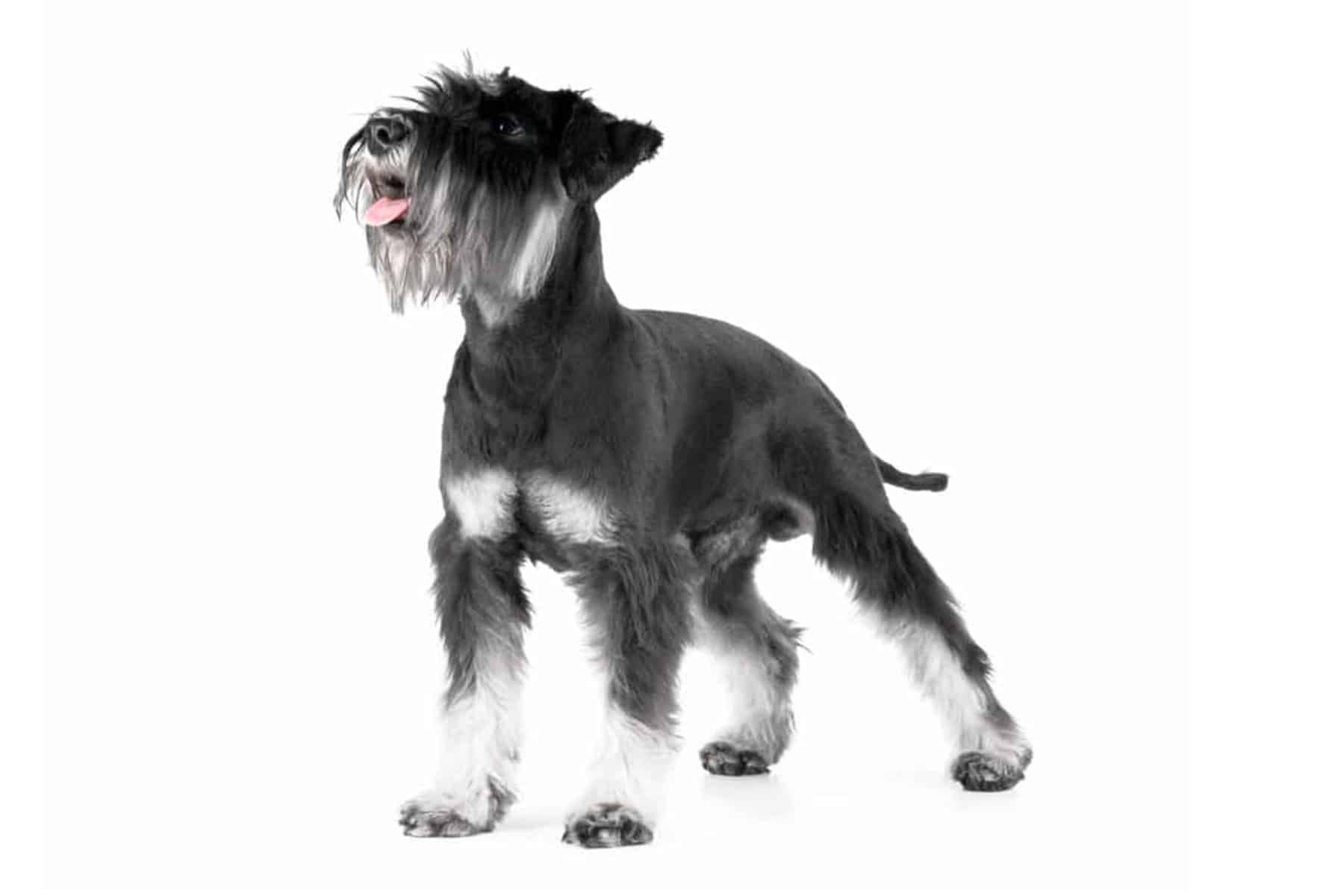
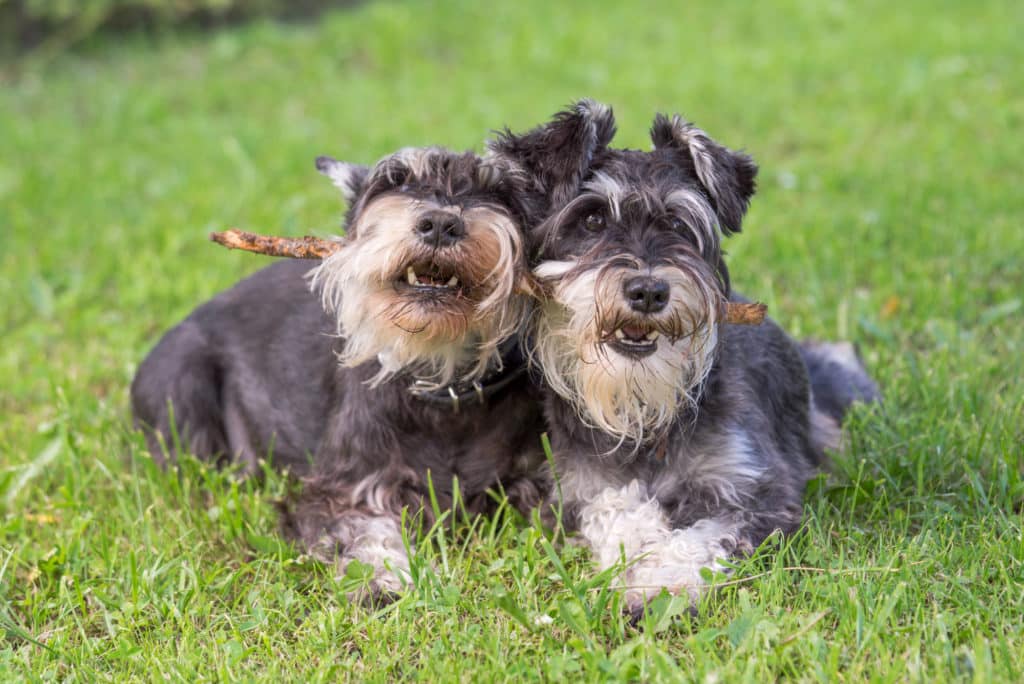
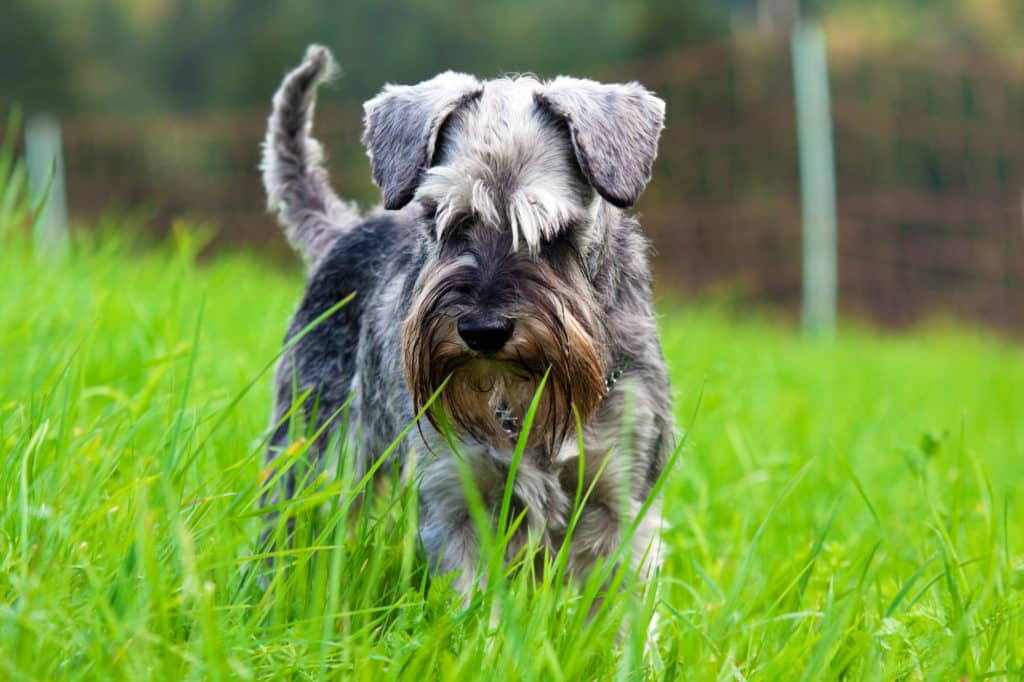
Temperament:
Little man big time. This is the best way to describe the smallest member of the Schnauzer family. This fearless dwarf with a strong character is not afraid of danger and loves an active life with his owner. He is a self-confident little beauty who shines with a high recognition value and is ideal as a family dog with his social traits.
Characteristics
The miniature version of the Schnauzer reaches a shoulder height of 30 to 36 cm and a weight of 5 to 9 kg. Its body is slender and its stature strong and compact. An elongated head and a short back characterize its stocky build.
The coat is typically wiry and stiff. The dense undercoat and the well-fitting grayish top coat provide optimal protection against wind and weather. Its most distinctive features are the long beard and bushy, thick eyebrows.
The charming dog is available in four color variations: black, white, black-silver and pepper-salt. The latter is the most common and is characterized by a fine grey with pigmented peppercorn markings.
This lively fellow is extremely agile. His stamina and condition are a particular challenge. He wants to be constantly challenged. He is an energetic and agile personality who is not satisfied with a life as a couch potato. He needs constant activity and exercise.
The Miniature Schnauzer is an absolute all-rounder who loves variety and is also demanding. Whether long, extended walks, tricky search games or excessive retrieving training - the Miniature Schnauzer is not afraid of anything. He always shows his dynamic, intelligent and adaptive side during sport and play.
This little rascal has a loving and affectionate nature. He will follow you wherever you go and be a loyal friend for life. He also feels very much at home in families with children, where he can live out his social and playful nature.
When the Miniature Schnauzer is bored, it likes to act out. As is typical for small dogs, it then shows itself through uncontrolled barking and dominant behavior. Clear and consistent training is therefore very important and essential for him. The little one needs a hand to guide him and patiently show him his limits. Otherwise he will take command himself and dance around on everyone else's nose.
This breed can be kept indoors, but needs a lot of activity due to its pronounced alert instinct. You need to be able to deal with its fearless temperament. Because even if he is small, he is definitely not a cuddly dog.
The Miniature Schnauzer is a dog that will be with you for a long time. Its life expectancy is 12 years and more.
Coat care:
Shedding:
Energy level:
Trainability:
Children suitable:
The right food
When choosing food, make sure that it contains high-quality ingredients, is balanced and meets your dog's requirements. Age, size or weight, activity and health status play an important role. You should follow the manufacturer's recommendations for the amount of food.
Treats should only be fed in moderation and deducted from the basic diet to avoid obesity.
Puppies can be fed 4-6 times a day. The number of meals should be gradually reduced to 2 per day until the dog is fully grown. A rest period should be observed after meals.
Fresh drinking water should be available at all times.
Health & Care
The Miniature Schnauzer's coat requires weekly brushing. Otherwise, the rough top coat and dense undercoat can easily become matted. The Miniature Schnauzer also needs to be trimmed several times a year. This is important for hair growth. Trimming requires some practice and experience, as it is not easy for beginners, especially on the muzzle. A visit to the dog groomer is almost a must for this breed.
Otherwise, the Miniature Schnauzer is easy to care for. It hardly sheds at all and does not have an annoying shedding pattern. This makes it particularly interesting for allergy sufferers.
To the delight of its owners, the Miniature Schnauzer is hardly susceptible to certain diseases. Connoisseurs report a greater tendency to form urinary stones and also slight eye inflammation. However, these are not life-threatening diseases. In addition, it always depends on the breeding family whether these symptoms actually occur.
Suitable accessories
A robust brush and a soft comb are essential for regular and species-appropriate coat care. For even easier combing, there are also fragrant oils that also give the coat a beautiful shine. As the Miniature Schnauzer's coat is very resistant, it does not need a raincoat in the wet and cold season.
Basic equipment also includes: collar or harness with lead, dog basket or dog mat as a retreat, water and food bowl, tick tweezers, claw clippers, mild dog shampoo, dog toothbrush and cream, transport box for safe transportation in the car and a first aid kit. It's best to ask your vet what should be in the first aid kit.
The hard-working and eager-to-learn Miniature Schnauzer loves toys to keep him busy. He gratefully accepts balls and other throwing toys. A food dummy for retrieving can also prove its worth with him. At home, he can be kept mentally busy with an exciting intelligence toy.
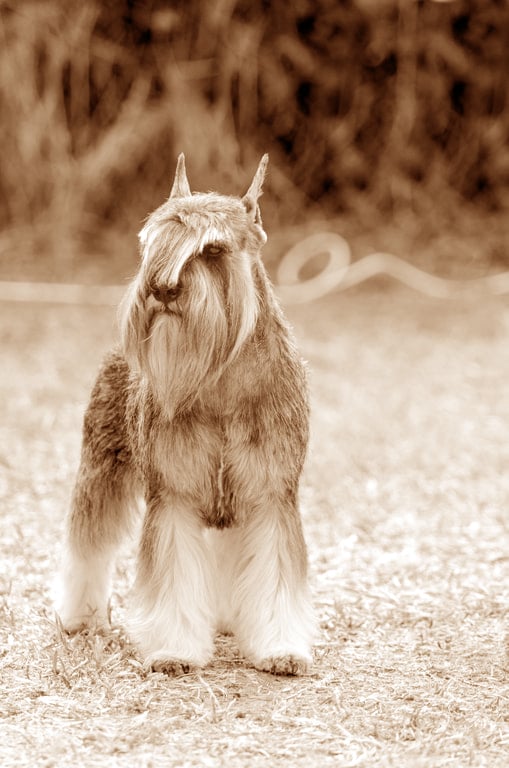
Origin & History
The fact that the Miniature Schnauzer is so hard-working and robust is due to its origins. In the past, it was the working dog of ordinary people and farmers who needed a reliable and uncomplicated guard dog for their belongings. Coachmen and traveling merchants also often kept this little protector. He was enduring enough for the strenuous journeys, easy to transport and courageously guarded the load.
Its deepest origins probably lie in southern Germany, in Württemberg. There it was long regarded as a popular cat substitute and reliable stable dog. Because he dutifully kept vermin such as rats and mice away or hunted them right away. This is where the nicknames "Rattler" and "Stallpinscher", which are still known today, come from.
Later, noble ladies from upscale houses developed a fondness for the lively four-legged dwarves. From then on, they became popular companion dogs.
The first breeding attempts were made from 1870. At that time they were still called "Miniature Pinscher". Schnauzers were increasingly bred, especially in the Frankfurt area, from which today's Miniature Schnauzer eventually emerged.
This once hard-working companion won't put up with anything and is a brave and loyal companion. He goes through thick and thin with you and is up for any kind of fun. Ball sports, water sports, jogging, cycling, cuddling - life with him is never boring.
